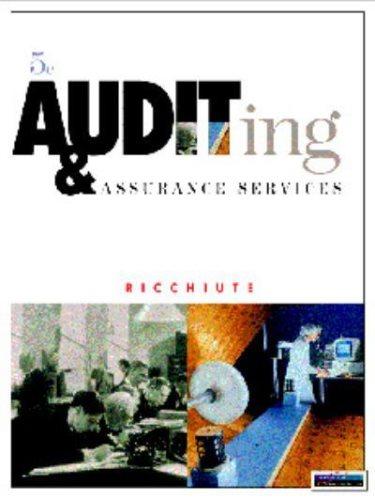Question
Candy is an employee of Jimmy, Inc. She receives a salary of $108,000. The company provides medical insurance that would cost Candy $750 per month
Candy is an employee of Jimmy, Inc.
She receives a salary of $108,000. The company provides medical insurance that would cost Candy $750 per month and matches Candys $500 per month contribution to the companys Section 401(k) plan. Candy s employer pays 3% of net income for unemployment insurance and 4% of net income for industrial accident insurance (i.e., workers compensation).
Assume Candys other income equals her other deductions, so the income from the business is her taxable income. Assume Candys federal income tax is a flat tax of 18% of taxable income.
Calculate Candys after-tax cash flow from this job. Ignore other income and deductions, including the standard deduction and the exemption deduction. Include the unemployment and workers comp at full value. Complete the Spreadsheet for Candy [5 Points Possible]
____________________________________________
Candy has income and deductions as a consultant for 2015 that are summarized as follows: Gross income from sole proprietorship $156,500 Cash operating expenses for sole proprietorship 30,400 Candy pays for her own medical insurance coverage at $750 per month and places $1,000 per month in a personal retirement account. Candy pays 3% of net income for unemployment insurance and 4% of net income for industrial accident insurance. The former is not deductible; the latter is. Assume Candys federal income tax is a flat tax of 18% of taxable income. Assume Candys other income equals her other deductions, so the income from the business is her taxable income. Also, note that a self-employed individual can deduct the cost of his or her medical coverage.
Calculate Candys after-tax income.
NOTE: The medical benefit value and the retirement account value are not included. You may add them, but since the benefit is the same as an employee and as an independent contractor, they are irrelevant. A cost is irrelevant to a decision if it is the same for each of the situations being considered.
| EMPLOYEE | |
| Salary | $108,000 |
| Retirement | $6,000 |
| Net Taxable | $102,000 |
| TAX | $18,360 |
| Cash Flow | |
| Net from Above | $102,000 |
| Social Secuity Tax | $ (6,696) |
| Medicare Tax | $ (1,566) |
| Income Tax | $ (18,360) |
| Unemployment Insurance | $ 3,240 |
| Workers' Compensation | $ 4,320 |
| $75,378 | |
| INDEPENDENT CONTRACTOR | |
| Gross | $156,500 |
| Operating Expenses | $ (30,400) |
| Net Income | $ 126,100 |
| Calculate SE Tax | |
| Multiply by: | 92.35% |
| SS Tax | |
| Medicare Tax | |
| TOTAL SE TAX | |
| Net Income | |
| One half of SETax | |
| Medical Insurance | |
| Retirement Taxable | |
| TAX | |
| Cash Flow | |
| Net from Above | |
| Self-Employment Tax | |
| Medical & Retirement | |
| Income Tax | |
Step by Step Solution
There are 3 Steps involved in it
Step: 1

Get Instant Access to Expert-Tailored Solutions
See step-by-step solutions with expert insights and AI powered tools for academic success
Step: 2

Step: 3

Ace Your Homework with AI
Get the answers you need in no time with our AI-driven, step-by-step assistance
Get Started


